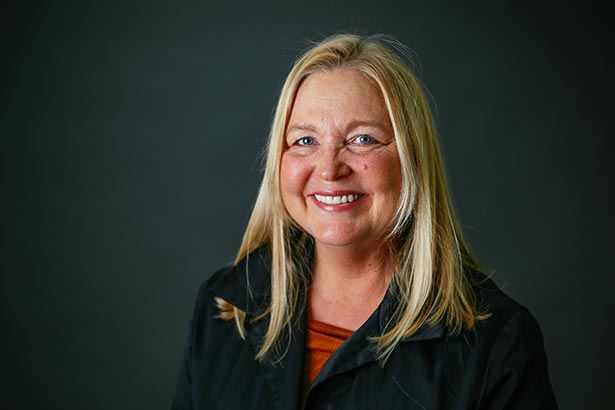
“Gaining weight was the worst possible thing that could happen,” says 17-year-old South Eugene High School senior Sophie Kreitzberg. Returning from a 500-mile walk along Spain’s Camino de Santiago, Kreitzberg had never been so thin. “I got so much attention,” she remembers, noting that she experienced her first romance, was cast in plays and that social interaction was just easier as a thin woman.
“My grandmother cried because I was so beautiful,” Kreitzberg recalls.
But school loomed, with its long hours confined to a desk. Although she had twice-daily water polo practice, Kreitzberg was no longer walking a daily marathon. Her body, like every other human being’s, has a set point for weight, to which it was eager to return.
The perfectly appropriate fat that makes Kreitzberg’s body healthy crept back, sending Kreitzberg into a spiral of shame, restriction and binge eating. The basics of human health, exercise and diet became insurmountable mysteries as Kreitzberg sought balance in a culture that exalts unrealistically thin bodies.
Kreitzberg’s story plays on repeat in our high school and college classrooms, with different dramas and details but the same moral every time: We are teaching our girls to be ashamed of their bodies and mistrust their own hunger. At best, they live with this shame and frustration coloring their lives; at worst, other factors combine to expand their dissatisfaction in full-blown eating disorders.
To make sense of why this is still happening in 2015, for all our enlightened Eugene culture, I sat down with some young women, spoke with eating-disorder survivors and contacted health professionals. I learned we are all complicit in this sabotage.
Media Grotesque
“Do you know anyone who is happy with her body?” I ask. Four healthy young women, all athletes, 17 and 18 years old and excellent students, look back at me in the question’s wake. Finally, Raina Kamrat answers, “No. I literally don’t know a single person who is happy with her body. I have some friends who are sometimes satisfied. But there are always bad days.”
It is easy to point a finger at the media for this body distress. The girls know the images they’re sold are unrealistic. Margaux Boehm spoke about the crazy Photoshopped images magazines pass off as real people. “So many people watch the Victoria’s Secret Fashion Show,” Eavan McKenzie says. “Those models look like they haven’t eaten for weeks!”
 |
| Margaux Boehm says unrealistic media images pressure young women |
While girls are savvy and have been taught to mistrust these images, the media still takes its toll. “A lot of people say they’re not influenced, but we’ve been force-fed these images of the ideal body for our entire lives, for generations,” Kamrat says. “We’re surrounded and bombarded by expectations.”
“The media, with the unattainable, computer-enhanced models and public figures, drives some individuals to try and meet the standard they perceive to be real. When it’s not achieved, guilt and self-degradation result,” says Laurene Larson, a therapist and Oregon’s International Association of Eating Disorder Professionals research chair.
And there’s money to be made from that guilt and self-degradation. “The beauty industry makes billions of dollars. If they put these unrealistic images out there, women are going to spend money to meet them,” says Kimberly Klose, clinical director at RainRock Treatment Center.
A harrowing 1999 study conducted in Fiji shows the impact of television on body image and eating disorders. Dr. Anne E. Becker of the Harvard Eating Disorders Center surveyed girls on Viti Levu as television was introduced to the island, and for several years afterwards. A culture where healthily fleshed figures were the ideal suddenly saw its young women become weight conscious.
Within three years of the introduction of television, 69 percent of girls on Viti Levu reported that they had been on a diet, and 15 percent were using vomiting to control their weight.
Kreitzberg, Boehm, McKenzie and Kamrat are all dedicated to fighting a media that seeks to profit from women’s body shame. Since recovery, Kreitzberg has presented about body positivity at the Youth Empowerment Symposium. Boehm is outspoken in her criticism of retailers that cater to fantasies of unattainable beauty standards.
But there is more to body shame than Photoshop and airbrushing.
TrackTown Troubles
“In Eugene you can’t be fat, like those other Americans,” Kreitzberg says. “We equate larger bodies with laziness. A thin woman is successful.”
Boehm notes that in Eugene, being thin is synonymous with being healthy. Larson says, “Thinness has been equated with health, which is not scientifically accurate. Good cardiovascular health is more important than weight and, in fact, restrictive eating or binge eating, especially when followed by purging, devastates health.”
 |
| Laurene Larson says there’s more to health than a slim figure |
Emi Stewart, 20, is an athletic young woman who is in recovery from a six-year bout with eating disorders. “Growing up in ‘TrackTown USA’ makes it hard to ignore the fitness fanatics, and if you have an eating disorder, every person is a game of comparison,” Stewart says. “A lot of people are very athletic, which makes it easy to hide dissatisfaction behind obsessive workouts.”
And, of course, our town celebrates thoughtful eating. You can have a moral or health objection to just about anything and find appropriate accommodations. Klose has noticed girls using our culture of elaborate food constructs to restrict. They go vegetarian, vegan, gluten- and dairy-free, “not for any moral or health reason, but in the vein of restricting.”
Rooted in Anxiety
Fostering a distressed body image will not necessarily lead to an eating disorder. Bulimia, binge eating and anorexia are classified as anxiety disorders, which psychologists think may be genetic.
“Biology loads the gun,” Klose says, “but society pulls the trigger.” According to Klose, women are trying to manage anxiety, stress and even PTSD with an eating disorder. “When a person restricts or purges, it will slow down neurotransmitters in such a way that it will be calming. There is a chemical response in the brain. You feel better, but the response erodes over time.”
Stewart describes that confluence of influence. “My struggle with body image started as a result of being heavily immersed in ballet culture, where perfectionism and long body lines are sought after,” she says. “I felt like being skinny would make me successful and admired, and make my mother proud.”
At 13, she continues, “I began counting calories every day and judging the success of my days based on how much I ate. Days over 1,000 calories were a failure. My mother is a recovered bulimic and told me about her eating disorder in great detail, so I had a ‘role model’ of sorts as I grew into my own eating disorder.”
Body Distress Begins at Home
“Family influence is important, and research shows that parents who diet and value a thin ideal have daughters who struggle to achieve that ideal,” Larson says. Klose says that the negative language adults use towards their bodies in a household directly impacts kids, and if kids are seeing an adult restrict or binge, they are learning that’s OK.
Stewart’s reflection gives a frightening illustration of that point. “My mother was an alcoholic and was abusive during my childhood, so as I reached high school, I began using food as a means to cope with the pain and guilt I was feeling,” she says. “I had seen my mother binge before, often while intoxicated, and I saw how she used food to numb her feelings. This led to a very secretive relationship with food, where I was for all appearances a ‘health freak,’ but would then go home and binge on ice cream and pizza. Being in control of what I ate made me feel powerful, like I had my life together, when I was really hurting inside.”
Media-raised mammas are key in understanding the persistence of body-image distress. Marketing to teens began in earnest in the 1970s. MTV was launched in 1980, and other teen-centered programming quickly followed. Thus the first group of women to grow up with the full-scale, destructive effects of media on body image is now parenting.
Living with body shame for the last 20 years, we seek to shield our daughters from that shame — not by smashing in our televisions and coming to peace with our bodies, but by trying to help our daughters stay slim.
We must be aware that every time we engage with media images, we are affected and make choices accordingly. Knowing the media is doing its best to make you feel your worst, you can decide if something is entertaining enough to be worth it.
As the adults in this situation, we need to find peace with our bodies. Perhaps we can follow Emi Stewart’s road: “For me, recovery has been about learning how to love myself. I had to let go of the guilt I held onto from my childhood, realize that none of it was my fault and learn how to acknowledge and express those emotions I had stuffed down for so long.”